Minca, Colombia, Wednesday, October 3, 2012
I think of all the cups of coffee I have drunk in my life, and only now have I visited a coffee plantation. I’ll never complain again about the price of coffee beans: I have seen work and processing that goes into producing my cup of joe.
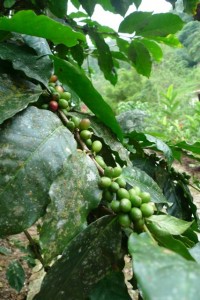
The coffee beans on the tree. The beans turn red when they are ripe and are picked between December and February.
We got a good driver with a Land Rover for the day. It sat seven of us: one shotgun, three in the back and three in the way-back. It was a good car for the rough, steep and severely potholed roads that we encountered that day.
We drove up, up, up, from sea level to the La Victoria organic coffee plantation in Minca, one of Colombia’s first coffee growing regions. The Land Rover was equipped with an altimeter and it registered over 1000 m (~3,200 ft) at the high point of the day.
La Victoria coffee plantation was established in 1892 by a couple of Englishmen. It is still going, mostly with the same equipment. The main processing area is situated on a river so that much of the equipment is powered by water.
It was fun to see “San Francisco” on the turbine equipment. It’s been a while since stuff like this was made in San Francisco.
Everything was belt driven.
The workshop that they use to maintain this old equipment was equally impressive. (They don’t get replacement parts from London, New York or San Francisco anymore.)
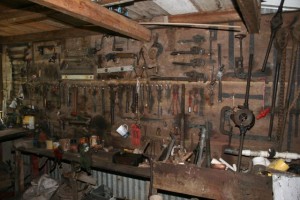
Here is the workshop. Nearby they had a huge stack of leather belts, ready to replace the ones in use.
More crazy old equipment. Everything was very ingeniously and efficiently designed — attested to by the fact that it is still in use over a century later.
I thought that Felipe was kidding around when he appeared to have a conversation on this phone. But, in fact, he was talking to a guy at one of the (17) picking stations higher up the mountain.
We finished the tour in the (still under construction) tasting room. It was a really good tour: delivered by Jaime and translated by Felipe. (I bet she didn’t know that a chemical engineer was translating for her.) La Victoria has only been giving tours since last December, but already 1800 people have been through. At the tasting room, we bought coffee (of course), souvenir sacks, and honey made by the bees that pollinate the coffee trees. (I’ll let you know if the honey tastes like coffee :))

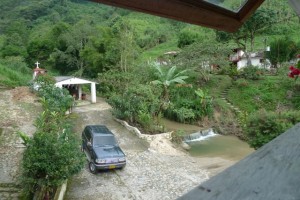
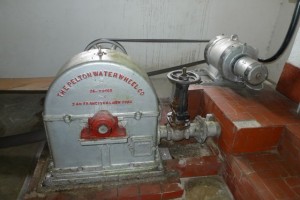
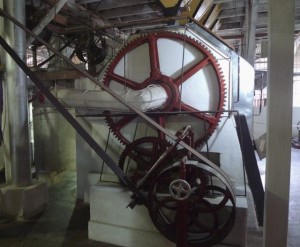
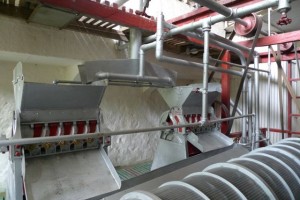
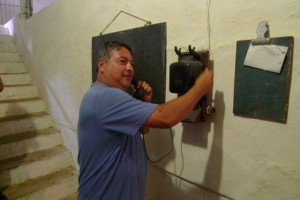
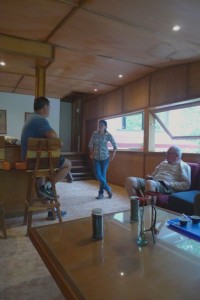
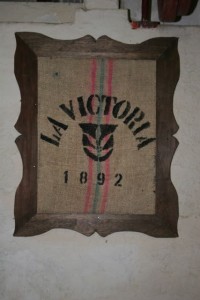
Very interesting! Enjoyed! Thank you 🙂
Great story and pix, thanks! However, your math may be rusty, methinks 1000 m = 3000 ft, not 32000 🙂 unless you were playing tag with commercial airplanes …
Oops, yes. Thanks for spotting that. Fixed now.
Fascinating post. I feel like I have been on a field trip!
Fascinating about the 100+ year old equipment.
I assume they served coffee in the tasting room (unless it is the “tasting” part that is still under construction) and I’m wondering how they prepared it.
Good question: Jaime prepared the coffee in a very ordinary “Mr. Coffee”-style drip machine. However, we saw a not-yet-installed fancy espresso machine — that’s part of the under construction bit.
Mmmmm. Coffee. Kind of like the tour of the Guiness factory only the natural elements are real not fabricated and you feel really perky after the tasting room.
Pingback: The secret swimming spot on the Minca River | On Delay